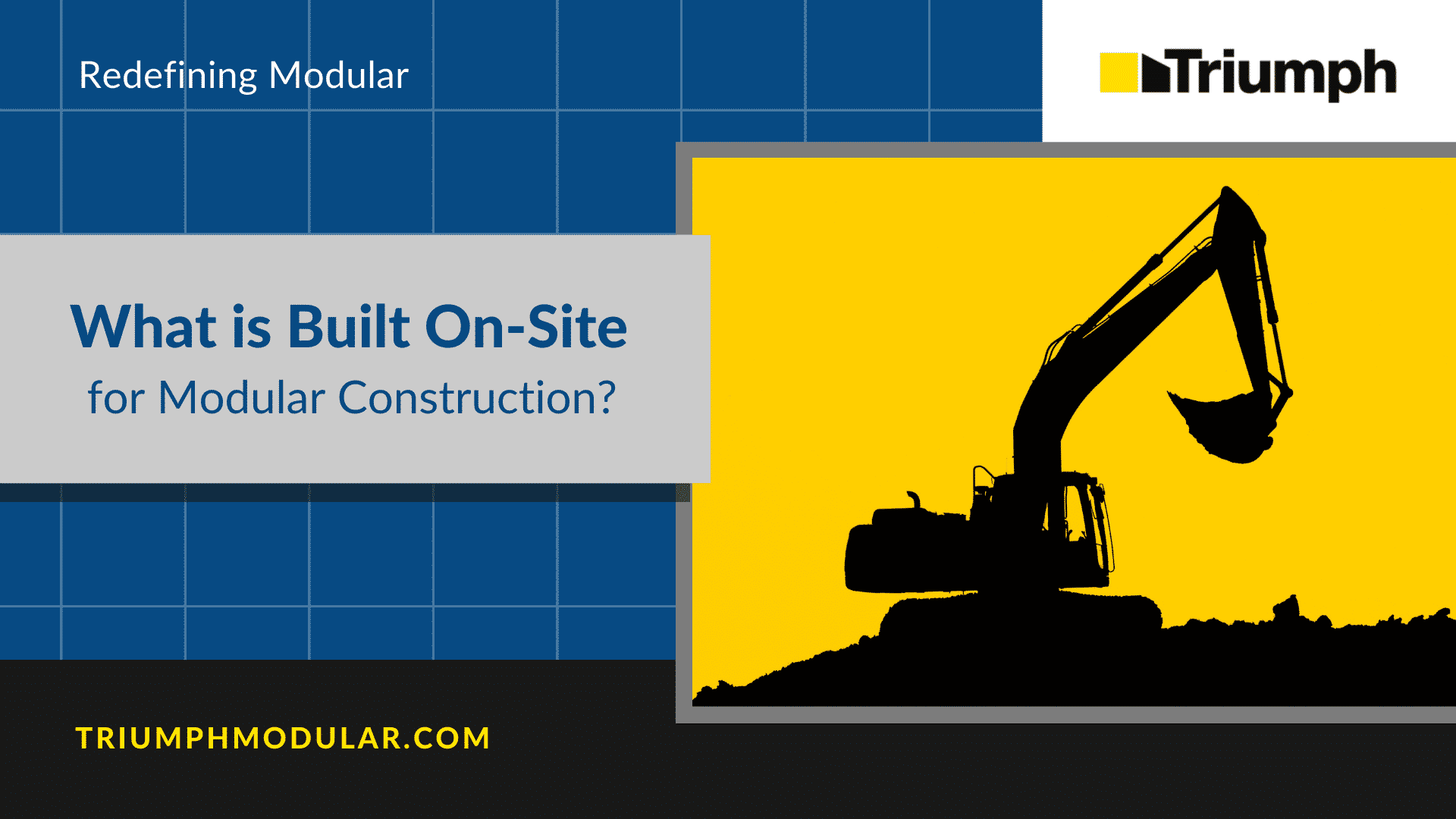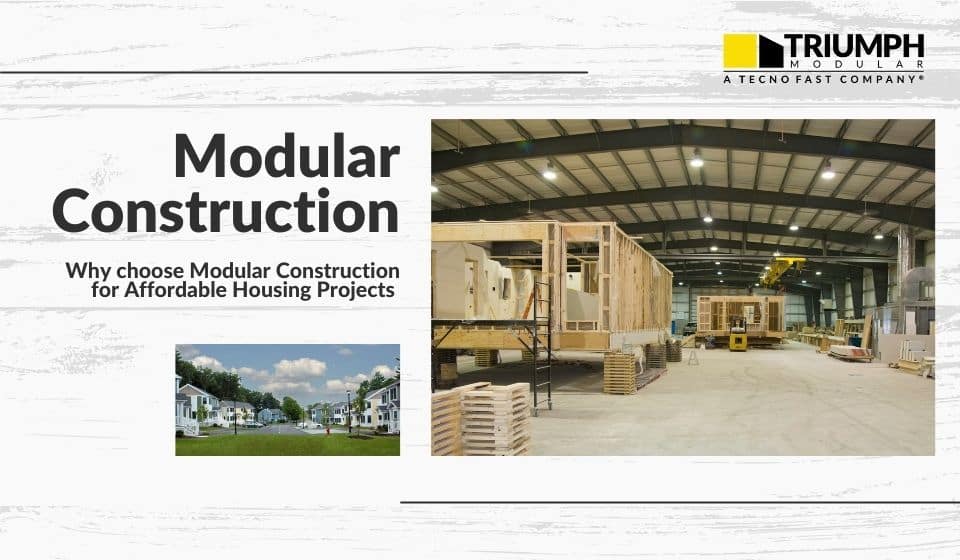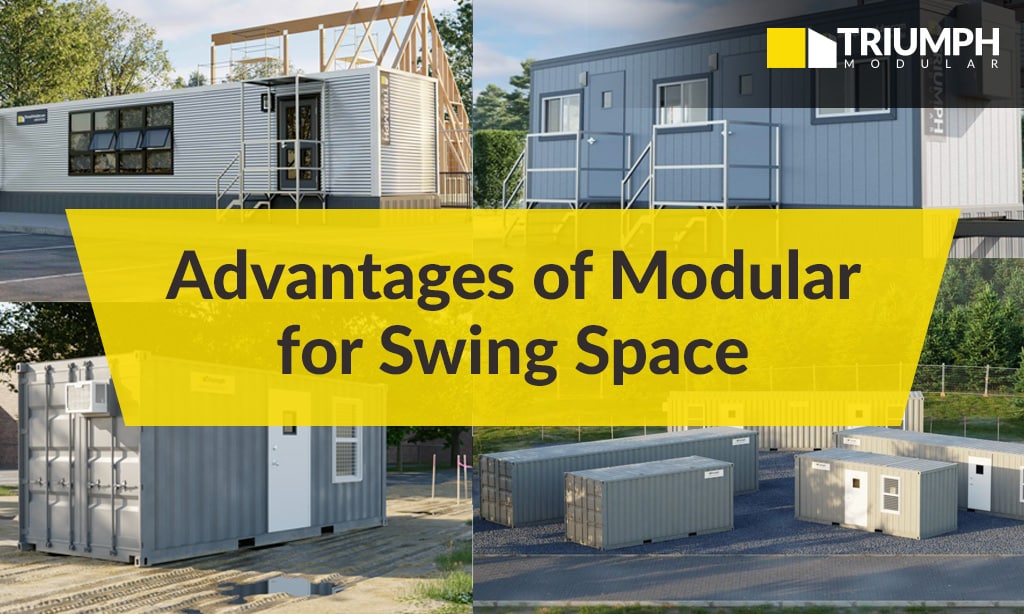Modular construction continues to grow in popularity for commercial developments, schools, and modular homes. As a result, many property owners and developers have scrambled to answer questions about the work that takes place off-site.
Many benefits of choosing modular construction over traditional construction start with one main concept: A large portion of the construction is done off-site and can be developed in tandem with the on-site work.
This raises an important question:
What is actually built on-site?
Knowing what needs to be done on-site is equally important, whether it’s for cost considerations or simply to plan around site work accordingly.
Because of this, we put together a list of different construction stages that occur on-site with modular construction. With this information, you’ll be able to better understand what happens on-site during the modular construction process. Site preparation for modular construction projects is identical to conventional construction projects, so the information below can serve as a guideline for each.
Lot Preparation
The first on-site work that takes place before a modular building goes up is the initial lot preparation.
Depending on the area chosen for the modular building, the amount of work that goes into lot preparation can vary. For example, if a wooded area is chosen, the trees and stumps will need to be cleared while also leveling the area.
Conversely, a level and obstruction-free area such as a parking lot will not require nearly as much preparation for the modular building.
Foundation
Foundation work depends on whether the building is going to be above-grade or on-grade.
Above-grade foundation tends to be the quickest and cheapest method. This involves the use of either Sonotubes, blocks, or piers which will raise the modular building about 2 feet above grade.
However, with an elevated modular building, an ADA-compliant ramp will likely be needed to enter and exit the building.
For on-grade, the site will need to be excavated enough for a crawlspace or a full basement. As the depth and the sophistication of the concrete forms increase, so does the price and the amount of on-site work needed.
Utilities and Connections
Utilities and connections will need to be prepared on-site before the modular building can go up. Modular buildings can require six different types of utilities and connections:
- Power
- Water
- Sewer
- Gas
- Communications
- Water Management
While tying in an existing system for power can be relatively simple. However, for brand new systems, it needs to be determined where power will come from.
Trenches need to be dug on-site for the waterline and pipe will need to be laid to tap into the municipal water existing well, or a new well will need to be drilled to serve the site.
Lastly, another trench will need to be dug out with additional pipe laid to connect to the town septic system.
Water Drainage
Ensuring that water drains effectively from the modular building is a crucial step in the on-site work.
There are surprising intricacies involved with this process. Some buildings, such as residential buildings, can drain from downspouts and disperse the water into the surrounding land.
However, with commercial buildings, drainage needs to either be contained and managed on the site, or tied into a municipal drainage system.
The amount of on-site work involved with the water drainage step will largely depend on the type of modular building going up.
Hardscaping
Even after the building is set, there’s still more on-site work to be done. Parking, for example, will require the extension of asphalt to ensure there is adequate space for building occupants to park.
The hardscaping step also includes creating concrete sidewalks and walkways for occupants to safely approach the building.
Landscaping and Outside Lighting
Landscaping and outside lighting are typically the finishing touches applied to a modular building.
Landscaping for modular buildings usually includes grass and plants surrounding the perimeter of the building. Landscaping work helps portray a more welcoming environment and helps give the modular building more character.
Outside lighting is necessary for safety purposes. Ensuring that occupants are able to clearly see while outside of the building is crucial should the building be occupied at night.
Although simple processes, landscaping, and outside lighting are both vital steps in the overall on-site work plan.
While Modular Mostly Involves Off-site Construction, On-site Work is Still Crucial
Most of the available information about modular construction concerns the work that can be done off-site.
This makes sense, considering a significant amount of the appeal surrounding modular construction is centered around saving time and money with off-site construction.
However, as you can see, there is still a sizable chunk of work that happens on-site.
Hopefully, with this information, you’ll have a better idea of what occurs on-site with your modular construction projects and you can plan accordingly.
Looking for More Information on Modular Construction?
Check out our modular buildings page for more information on the modular process and the benefits of going modular.




